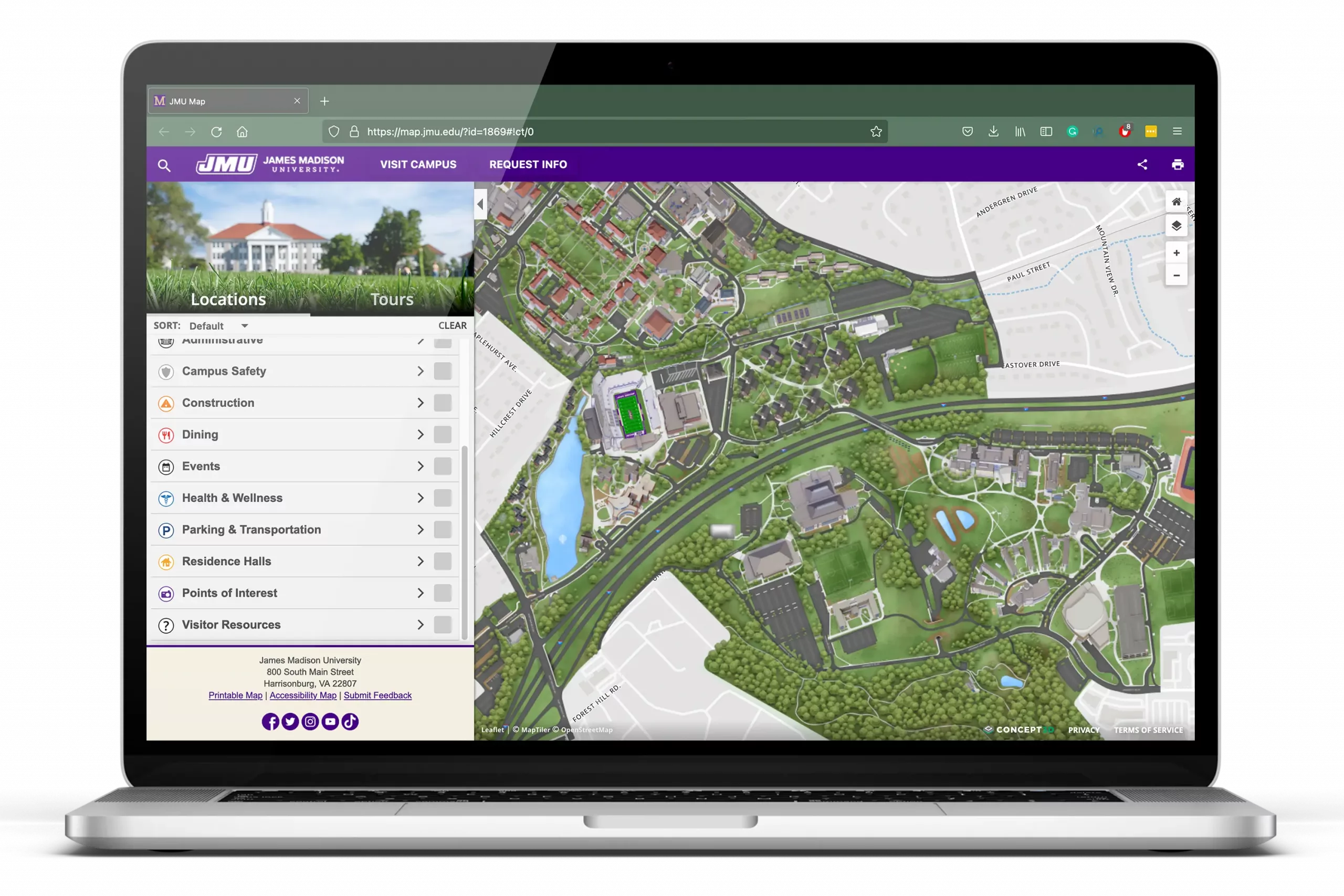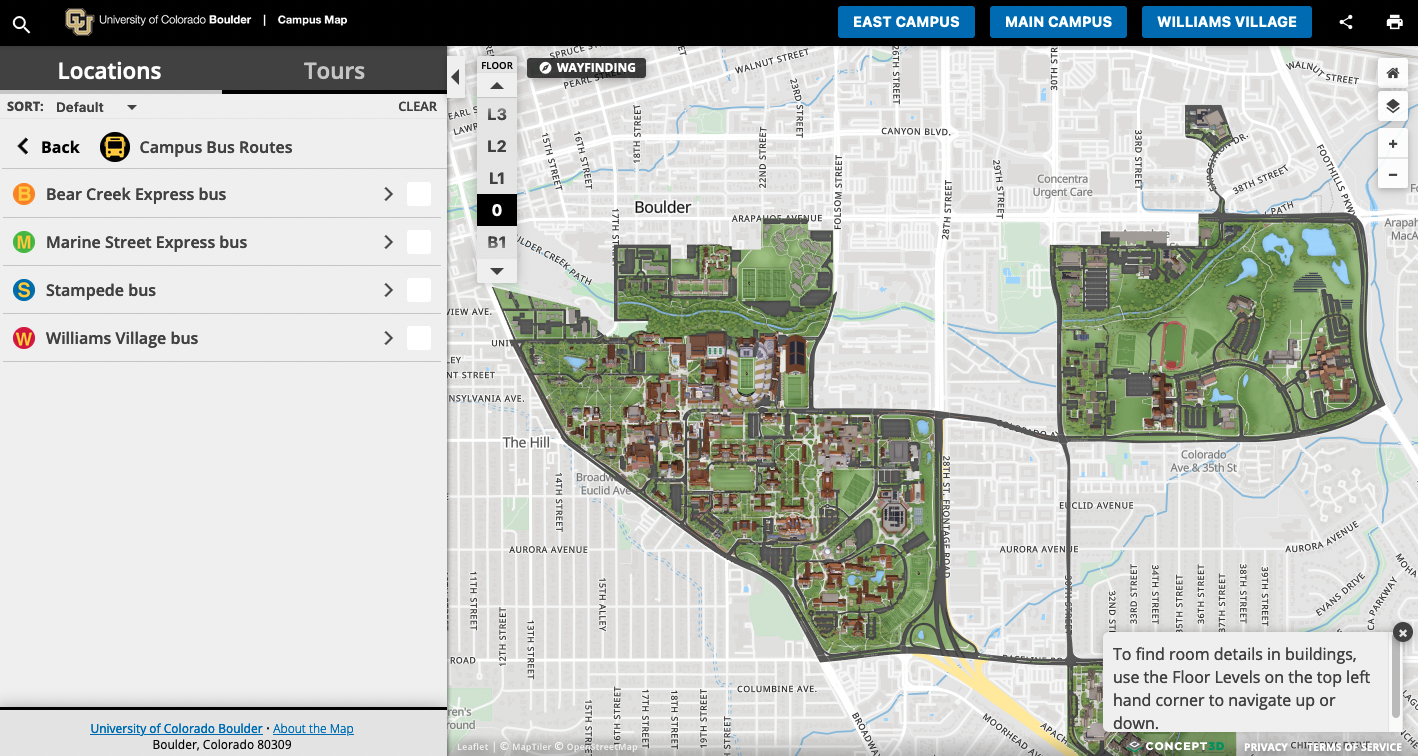Let’s start with a shocking statement: interactive campus maps are a great way to get the attention of students who are interested in your institution but who may not be able to visit your campus.
Okay, maybe that statement was not all that shocking, especially considering the fact that according to a 2022 internal Concept3D survey, 83% of incoming first-year college students view virtual maps when selecting what schools to apply to. On top of that, almost 90% view the map once accepted to the school.
But to be successful, the process of creating interactive maps needs to be strategic. Don’t just jump in, thinking it will help your institution regardless of its setup. Instead, careful planning and preparation are essential. Here are five things you need to know before creating interactive campus maps to ensure that the end product will promote your campus to prospective students and serve as a valuable tool to current students.
1. Highlight your school’s unique selling points
Your interactive campus maps are a perfect tool to help highlight your campus to students considering you as an option. That means it needs to profile your institution’s best elements: the locations, programs, activities, history, surroundings, etc., that will make you stand out.
Do you have fantastic extracurricular activities or an amazing on-campus collection of art? Highlight them with a virtual tour, slideshow, or video. How about a state-of-the-art science facility that will attract future biology students? Make sure the map features it prominently and visitors can easily find it.
Do you have specific services or facilities that demonstrate your institution’s care about student needs, such as lactation rooms for new mothers, accessibility routes for the disabled, gender-neutral restrooms, or campus worship rooms? Add them to your map! Is there a piece of natural beauty or notable historic site or monument on campus or nearby? The list goes on.
Knowing and highlighting the aspects that make your campus life special can help you come up with a plan on how to optimize your map.
2. Improve the student experience by advertising on- and off-campus events
If college was only about classes and sleeping in residence halls, campus life would be boring. It’s the events that bring life to the college experience. Your new interactive map offers a perfect opportunity to highlight them.
For example, you can include event categories that allow your audiences to easily find what they’re looking for when first looking at the map. You can also include individual event information in the buildings where those events will take place.
Concept3D’s integration with the Localist, the leading interactive event calendar platform for higher ed, is another perfect opportunity to drive event awareness. Your users can view and discover events by location proximity. Then they can use the map’s wayfinding tools to easily find their way to the location where it all takes place.
3. Help students navigate campus through live data feeds
Of course your campus map offers basic wayfinding — in more ways than one. But it’s the live data feeds that can truly make it stand out from more traditional printed maps in helping to enhance the student experience.
Through live data feeds, students can keep updated on public transportation, like where their next bus is on their route. They can then combine that information with the more standard wayfinding tools to always find the fastest routes to where they need to go. That means no more confusion and stress, especially for new students still getting used to the campus layout.
Preparing for the launch of your interactive campus map means finding opportunities to integrate these live data feeds, then beginning to work on the integration with your IT department. With the right platform, it might be more intuitive than you think!
4. Provide accessibility features with interactive maps
Most universities know they need to make their campus more accessible. So why should your digital map be different? Simply put, it needs to be able to help all audiences, even those with disabilities.
Prepare for your map implementation by looking into platforms that prioritize accessibility. For example, Concept3D’s platform integrates tab navigation, along with voice narration and multi-language options. Focusing on this element early in the process can prevent headaches later on.
5. Map potential traffic to your website
In the modern student journey, no tactic or message exists in isolation. Your interactive campus map should be no different. Audiences will come to it from your website but also expect to be guided back to the website for more information as needed.
For example, you might want to link to a ‘visit campus’ sign-up form, your admissions application, a homecoming registration, and more. Even simple links to your core admissions and campus pages on the website might be beneficial. Mapping out those potential paths can be a major help when building out your new interactive map.
With a mapped-out list of outbound links from the map in place, implementation will be much simpler. Now, you can fully leverage a platform’s ability to create call-to-action buttons at the top of a map, driving admissions inquiries and applications strategically in the process.
Interested in learning what interactive maps can do for your school?



